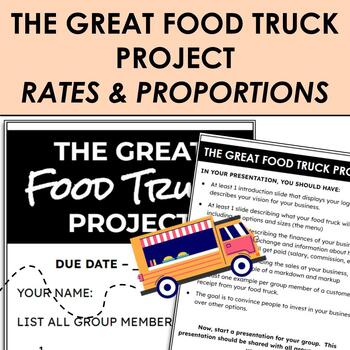"The Great Food Truck Project" - Rate, Proportions, and Percents Unit Assessment
- PPTX
Description
A rates and proportions unit project, centering around the real-world use of percentages and rates. Students work with a small group to create their own concept for a food truck, including what food and drink options they would sell. Using inspiration for "The Great Food Truck Race" and "Sharktank" TV shows, students work to create a best-selling idea, that also showcases their own values as a "company".
I hope to share more information and examples of how I use this project with my upcoming year of students, but please reach out to me with comments or questions about how to use this project as a culmination of the rates and proportions unit. I typically use this as an assessment on the percents part of the unit, as it creates a real-world scenario for students to immerse themselves in and get creative with.


